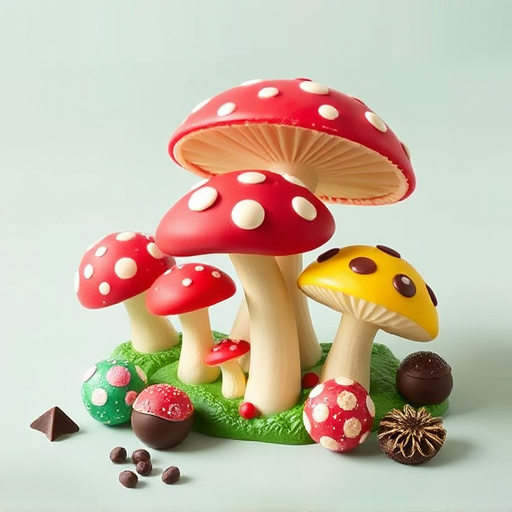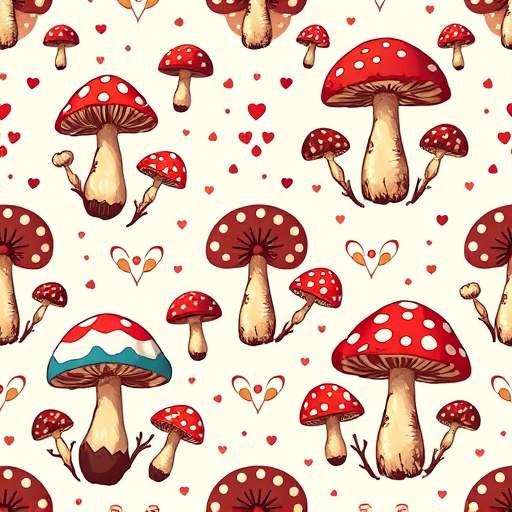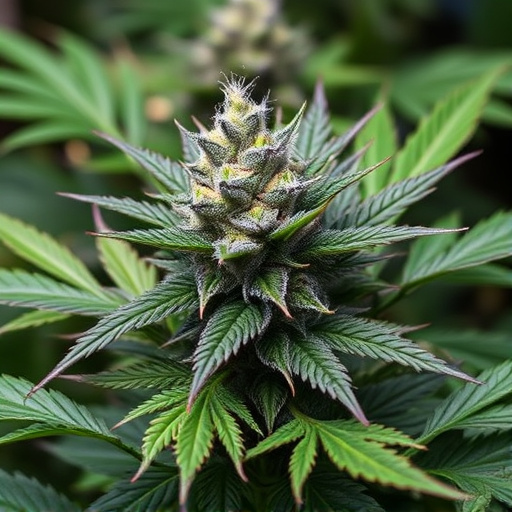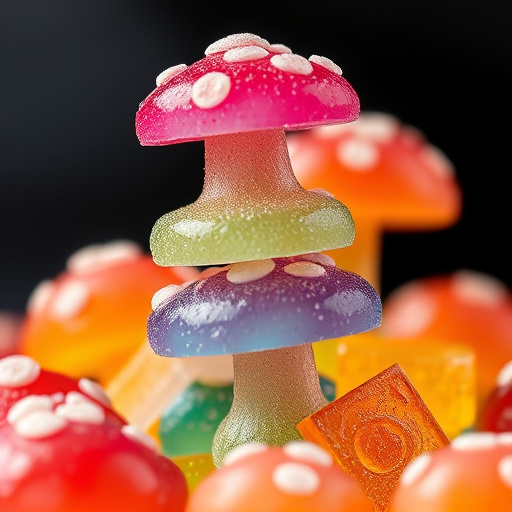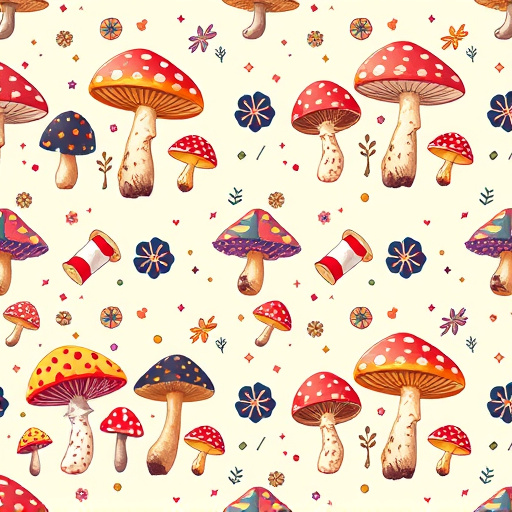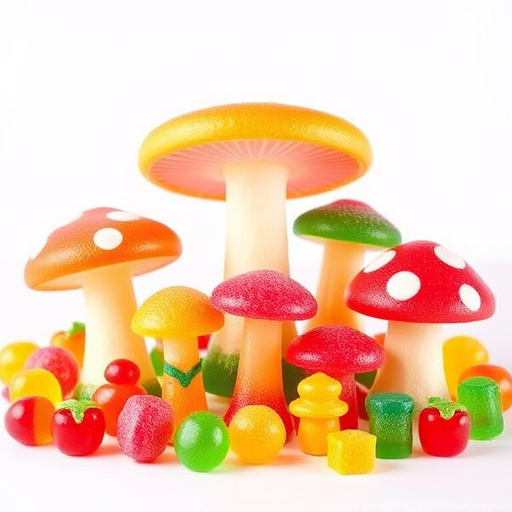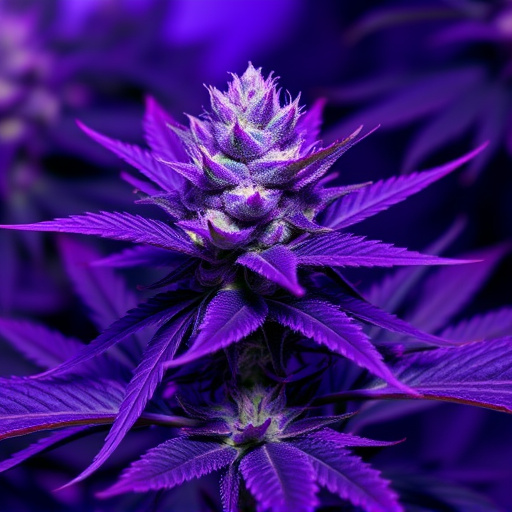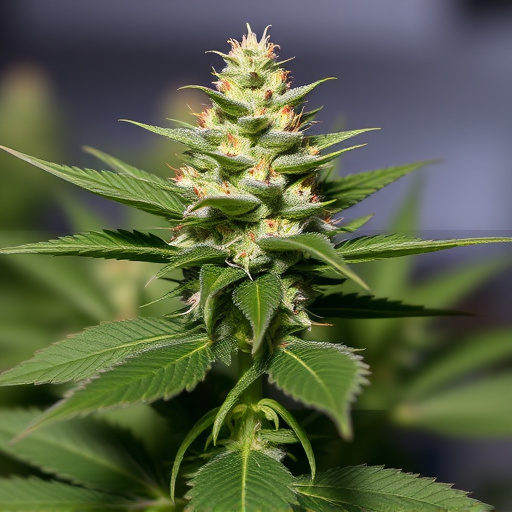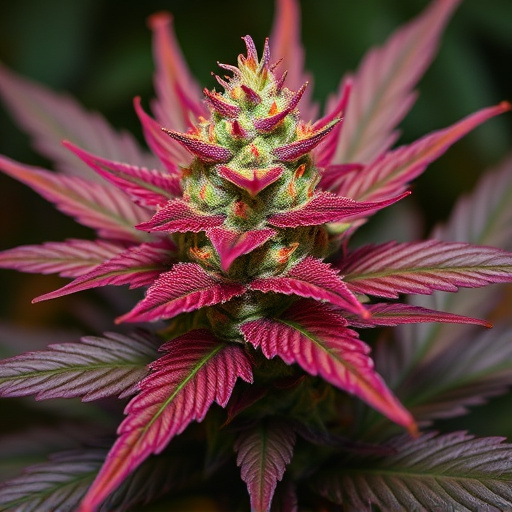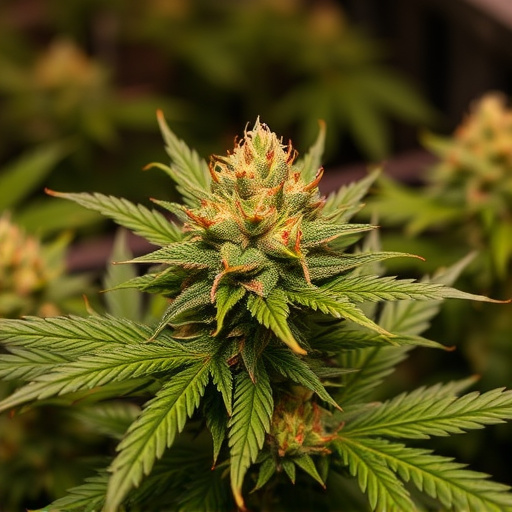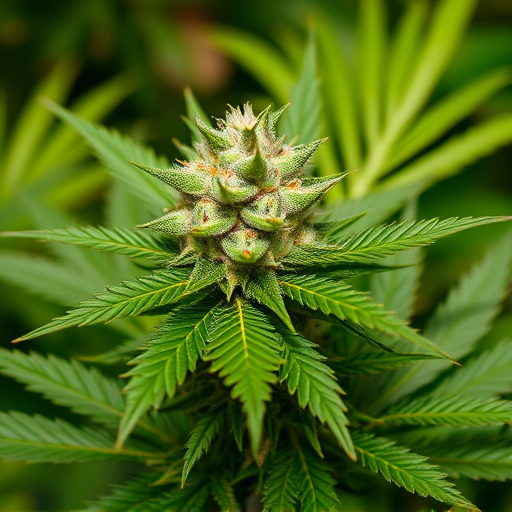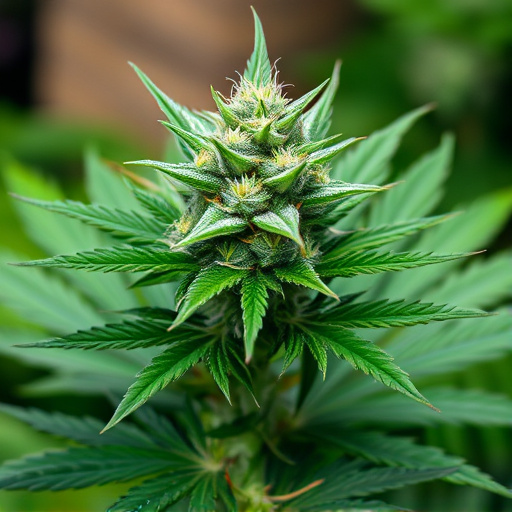The natural production of cannabinoids in cannabis flowers is linked to pigmentation, with THC and CBD synthesis driven by biochemical interactions during maturity. Environmental factors like temperature, light intensity, and duration control flower colors, from yellow to red and purple, indicating strain potency—darker shades suggest higher THC levels for stronger effects, while lighter hues may offer therapeutic benefits. Cultivators can manipulate these conditions in indoor farms to enhance specific color nuances, creating visually stunning and potent cannabis strains that cater to consumer preferences.
Cannabis flowers’ color transformation is a fascinating process, offering more than meets the eye. This article delves into the intricate relationship between cannabinoid production and pigmentation, revealing why cannabis blooms exhibit vibrant hues like purple, orange, and red. We explore how environmental cues trigger these changes, specifically focusing on the connection between color and the potency of cannabis strains. Understanding these factors empowers cultivators and enthusiasts alike to appreciate the beauty and complexity of this remarkable plant.
- The Natural Process of Cannabinoid Production and Pigmentation
- Environmental Factors Influencing Color Changes
- How Color Indicates Potency in Cannabis Strains
The Natural Process of Cannabinoid Production and Pigmentation
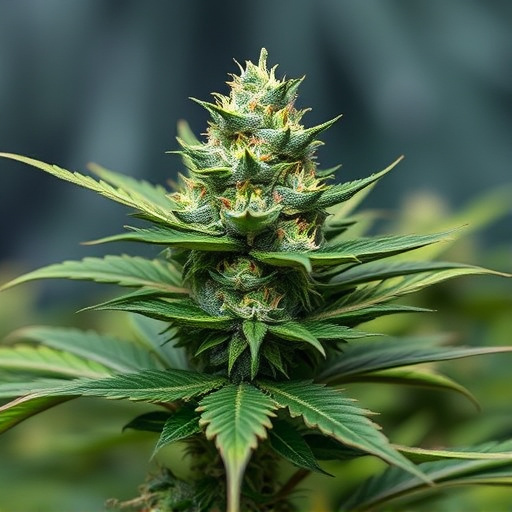
The natural process of cannabinoid production in cannabis plants is intricately linked to the development of its pigmentation. As cannabis flowers mature, they undergo a series of biochemical transformations that lead to the synthesis of various cannabinoids, including THC and CBD. This process involves complex interactions between different plant compounds, such as chlorophyll, carotenoids, and flavonoids, all of which contribute to the flower’s final color.
During the late stages of floration, cannabis plants redirect their energy towards cannabinoid production, causing a gradual breakdown of chlorophyll, the green pigment responsible for photosynthesis. This decline reveals other pigments that were previously masked, resulting in the vibrant colors associated with potent cannabis strains. Carotenoids, for instance, produce hues ranging from yellow to orange, while flavonoids contribute to reds and purples. The precise balance of these compounds determines the unique coloration of each strain, offering a visual indicator of its potential therapeutic benefits and potency.
Environmental Factors Influencing Color Changes
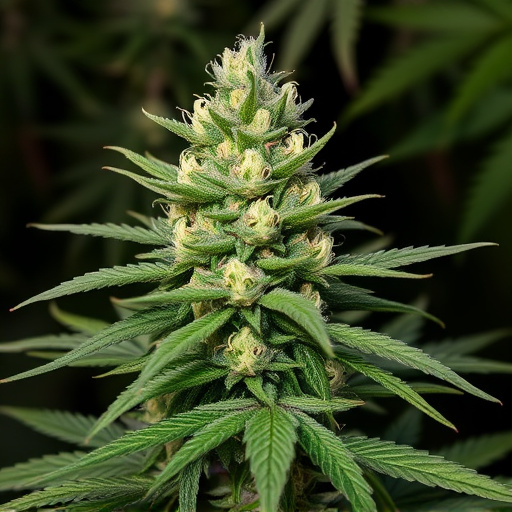
The color transformation in cannabis flowers is a fascinating process, heavily influenced by environmental factors. These variables play a crucial role in determining the final hue, from rich reds to vibrant oranges and deep purples. In controlled environments, like indoor cultivation, growers can manipulate these conditions to enhance specific color nuances, creating truly unique and visually striking potent cannabis strains.
For instance, temperature and light intensity are key players. Cooler temperatures often encourage the development of red and purple tints, while warmer conditions may result in more yellow or green shades. Additionally, the duration of daylight and the spectrum of light can trigger color changes at different stages of a plant’s life cycle. Understanding these factors allows cultivators to guide the natural process, fostering the growth of cannabis flowers that not only possess potent properties but also captivate the eye with their vibrant colors.
How Color Indicates Potency in Cannabis Strains

The vibrant colors of cannabis flowers offer more than just aesthetic appeal; they serve as a visual indicator of the plant’s potency and chemical composition. Each color variation corresponds to different levels of cannabinoids, particularly THC (tetrahydrocannabinol), which is responsible for the plant’s psychoactive effects. Darker shades, like deep purple or blue, often signal higher concentrations of THC, making these strains more potent. Lighter hues, such as yellow or orange, suggest a lower concentration, though they may still offer therapeutic benefits.
This natural coloring is a result of various factors, including the plant’s genetic makeup and environmental conditions during growth. Cannabinoid production is influenced by light exposure, with some wavelengths promoting higher THC levels. Therefore, understanding the color cues can help consumers choose potent cannabis strains that align with their desired effects, ensuring a more tailored and enjoyable experience.
In understanding why cannabis flowers change color, we uncover a fascinating interplay between nature’s processes and environmental cues. The natural production of cannabinoids and pigmentation, coupled with external factors like temperature and light exposure, contribute to the vibrant spectrum of colors seen in these plants. Moreover, these color changes serve as valuable indicators of potency in various cannabis strains, offering growers and consumers essential insights into the final product’s quality and composition.
